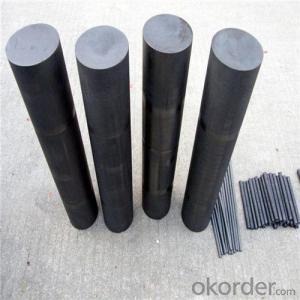Let’s dive into the fascinating world of graphite electrodes and their pricing. It’s a topic that might seem as dry as the graphite itself at first glance, but trust me, it’s got a spark to it. The cost of these crucial components in the steel industry is influenced by a myriad of economic factors, and I’m here to shed some light on them, in a way that’s a bit more personal and less formal than your typical economic analysis.
First off, we’ve got to talk about supply and demand, the classic duo that dances around the price tag of almost anything you can think of. When the demand for graphite electrodes surges, usually due to an increase in steel production, the prices go up. Conversely, when demand drops, prices tend to follow suit. It’s a simple concept, but the real story lies in the details of this supply-demand ballet.
Now, let’s take a stroll through the graphite electrode production process. It’s not just a matter of digging up some graphite and calling it a day. The production is energy-intensive, and that’s where the cost can get a bit tricky. The cost of electricity, for instance, plays a significant role in determining the final price of a graphite electrode. If there’s a spike in energy prices, you can bet that the cost of production will rise, and so will the selling price.
But it’s not just about the energy used in production. The quality of the raw materials also has a say in the price. High-quality graphite is more expensive, but it’s also more efficient and longer-lasting, which can be a game-changer in the steel industry. So, when the quality of raw materials goes up, so does the price of the electrodes.
Another factor that can throw a wrench into the pricing mechanism is the availability of raw materials. If there’s a shortage, you can expect the prices to soar. This can be due to various reasons, such as natural disasters, political instability, or even just a change in the market dynamics. For instance, if a major graphite-producing country decides to limit its exports, the global supply can be affected, leading to an increase in prices.
Let’s not forget about the role of technology in this whole equation. Advances in technology can lead to more efficient production methods, which can help lower the cost of production and, in turn, the price of graphite electrodes. On the flip side, if there’s a technological breakthrough that improves the performance of graphite electrodes, the demand for the improved product can drive the prices up.
Then there’s the impact of environmental regulations. These regulations can affect the cost of production, especially if they require more expensive equipment or processes to meet the standards. If the regulations are stringent, the cost of compliance can add to the price of the electrodes.
The global economy also has a say in the pricing of graphite electrodes. Economic growth can lead to an increase in demand for steel, and by extension, graphite electrodes. On the other hand, during economic downturns, the demand for steel can decrease, which can lead to a drop in the prices of graphite electrodes.
And finally, we’ve got the wildcard of the bunch: market speculation. Traders and investors can influence the prices of graphite electrodes based on their predictions of market trends. If there’s a buzz that the demand for steel is about to increase, speculators might start buying up graphite electrodes, driving the prices up even before the actual increase in demand materializes.
In conclusion, the pricing of graphite electrodes is a complex interplay of various economic factors. It’s not just about the cost of production or the availability of raw materials, but also about the global economy, technological advancements, environmental regulations, and market speculation. Understanding these factors can help us navigate the sometimes volatile world of graphite electrode pricing with a bit more clarity and confidence.

